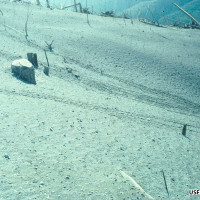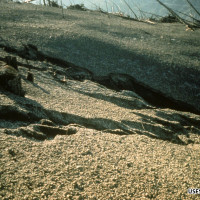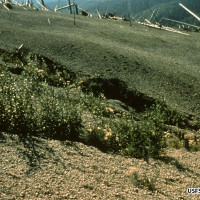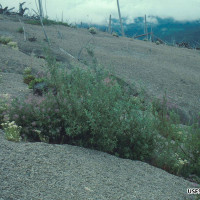How did erosion influence vegetation re-establishment?
Erosion played a very important positive role in the survival of native plants at Mount St. Helens and, ultimately, the long-term stabilization of blast zone hill slopes. From the standpoint of ecosystem recovery at St. Helens, erosion should be viewed as a positive process. Erosion during the first winter broke up the overlying ash and enabled many native plants to re-sprout and survive. In many areas plant recovery was restricted to erosion gullies on steep slopes. These early plant survivors provided a good seedbed (shade and litter) and thus helped pave the way for plant establishment throughout the blast zone.
The positive influence of erosion on vegetation recovery is a key lesson learned for managers of areas in the wake of large-scale disturbance. Where eruptions bury existing vegetation and ash deposits are comparatively thin (less than 10 inches), it is very likely that the surviving native vegetation will be the most dominant force in stabilizing the hill slopes. In these cases, it is unlikely that introduction of non-native grass species will be cost effective.
- Erosion gullies formed quickly as runoff from fall rains cut through the ash deposits.
- Same view, roots sprout from pre-eruption soil exposed by erosion.
- Three years after the eruption willows and other plants have established.
- Most of the vegetation on this deep ash site is confined to erosion gullies.






